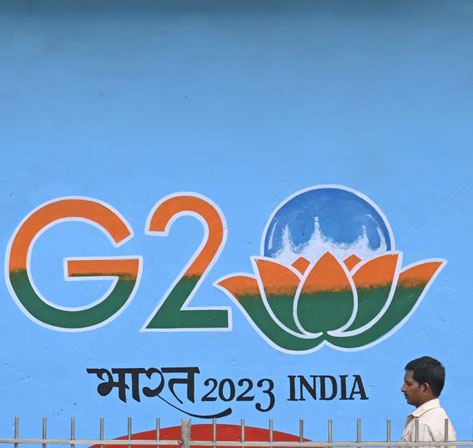September 2023
U.S. Perspective on the 2023 G20 New Delhi Summit
Region: Transatlantic Perspectives: Americas
Author: Erin McCoy
The U.S. perspective addressed climate change, resilient supply chains, and economic cooperation.
The 2023 G20 Summit held in India from September 9-10 marked a significant moment in international diplomacy and global governance. With Chinese President Xi and Russian President Putin’s absence, the floor was open for U.S. President Biden to solidify alliances and make the case that the United States is a more reliable partner than Beijing. The U.S. perspective addressed climate change, resilient supply chains, and economic cooperation. All while sharing a relatively soft joint statement on Ukraine that did not explicitly condemn Russia’s invasion of Ukraine.
The United States underscored its commitment to the Paris Agreement on climate change and its efforts to transition towards a greener economy. The 2023 G20 Summit offered a platform for countries to collaborate on emissions reduction targets, renewable energy, and sustainable development goals. These efforts were supported by the United States’ call to G20 leaders to further help the World Bank and other multilateral development banks over the next year to support low and middle-income countries. President Biden led by example by asking Congress to increase the World Bank’s financing by more than $25 billion, a significant increase that will allow the bank to help developing countries achieve their economic goals.
Another crucial aspect for the United States was the topic of economic cooperation, as it was a focal point during the G20 meetings. President Biden, along with Saudi Arabia’s Crown Prince Mohammad bin Salman and Prime Minister Narendra Modi of India, attended a joint session to announce the Biden-led initiative that will comprise two separate corridors, the east connecting India to the Middle East, and the northern corridor connecting the Middle East to Europe. It will include a railway system to supplement the existing trade routes between the regions. The new ship-to-rail economic corridor was framed as a counter to the decade-old Chinese Belt and Road Initiative. Biden hailed the new network as a “game-changing regional investment.”
Most importantly, the United States used the G20 Summit in India as an opportunity to engage with key allies and partners in the Indo-Pacific region. Given the region’s increasing significance in global politics and trade, President Biden sought to build stronger alliances with India and Vietnam during his time in the region. Biden held a bilateral meeting with Prime Minister Modi to reinforce his commitment to a free and open Indo-Pacific. Following the G20, President Biden traveled to Vietnam to meet with leaders in Hanoi to discuss a “comprehensive strategic partnership” that will strengthen the U.S.-Vietnam relationship. His visit to Hanoi is one of Biden’s latest attempts to create a stable base of regional partnerships in the Indo-Pacific.
From the United States’ perspective, the G20 New Delhi Summit was a significant opportunity to demonstrate its global leadership and commitment to multilateralism, collaboration, and diplomacy and to advance new initiatives aimed at countering China and Russia. Time will tell to what extent the agreed outcomes of the Summit will help to shape the U.S.’s vision of a more inclusive, sustainable, and prosperous future for all nations.
